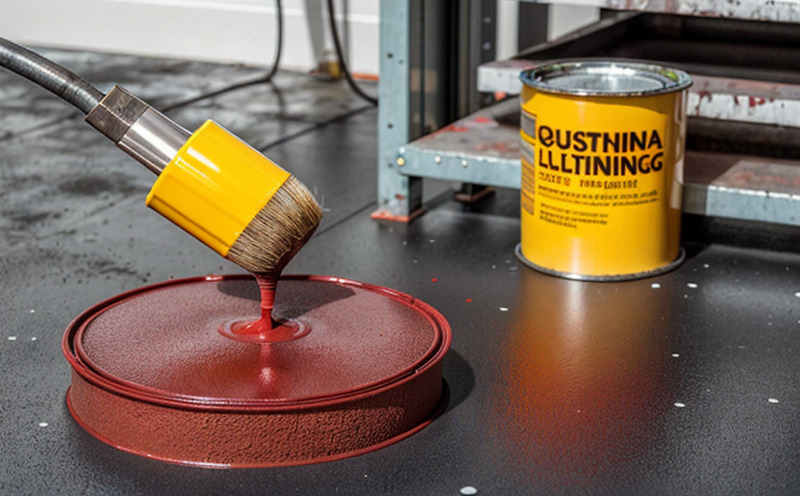ASTM D1640 Drying Time Testing of Coatings
The ASTM D1640 standard provides a standardized method for determining the drying time of coatings. This testing is crucial in industrial manufacturing and processing, where surface integrity and performance are critical to product quality and safety. The drying process of coatings directly affects their adhesion properties, chemical resistance, and overall durability.
The ASTM D1640 test involves measuring both initial tack-free (TFT) and complete dry times for various types of coatings. Initial tack-free time is defined as the period during which the coating becomes sufficiently dry to allow handling without picking up dirt or fingermarks. Complete dry time refers to when the coating has achieved its ultimate dryness, enabling a second coat to be applied without any adverse effects.
During testing, samples are typically prepared by applying the coating over a specified area on a suitable substrate, such as glass or metal, and then placed in a controlled environment. The drying process is monitored using humidity and temperature sensors to ensure consistent conditions that mimic real-world industrial environments. This precise control of parameters ensures accurate measurement results.
The test procedure involves observing the sample periodically for changes in surface appearance or touch until it meets the specified criteria for TFT and complete dry times. These criteria are based on visual assessment, touch testing, or other appropriate methods as outlined in ASTM D1640. The final reported values are critical for quality control purposes, ensuring that coatings meet industry standards and specifications.
The importance of this test lies in its ability to provide consistent and reliable data about coating performance under controlled conditions. This information is invaluable during the product development phase, allowing manufacturers to optimize drying times and improve overall product performance. Additionally, compliance with ASTM D1640 ensures that coatings meet regulatory requirements, enhancing trust among customers and stakeholders.
In industrial manufacturing, where time-to-market pressures are high, accurate drying time testing can significantly reduce downtime and improve efficiency. By understanding the precise drying characteristics of coatings, manufacturers can streamline production processes, minimizing waste and optimizing resource usage. This not only leads to cost savings but also contributes to sustainable practices by reducing environmental impact.
The ASTM D1640 test is particularly relevant in industries such as automotive manufacturing, aerospace, and electronics, where surface finishes play a crucial role in product performance. For instance, in the automotive sector, proper drying of paints ensures excellent adhesion between layers and resistance to corrosion. In the aerospace industry, this testing helps ensure that coatings meet stringent durability standards, critical for maintaining structural integrity.
Understanding the drying process also aids in identifying potential issues early on. By monitoring drying times closely, manufacturers can detect any deviations from expected behavior promptly. This proactive approach allows for timely adjustments to manufacturing processes or raw materials, preventing costly rework and downtime. Furthermore, consistent drying time measurements contribute to quality assurance efforts, enhancing customer satisfaction by delivering products that meet or exceed expectations.
The ASTM D1640 test is an essential tool in the continuous improvement of industrial coatings. Its standardized approach ensures that all participants in the supply chain are working towards a common goal, promoting consistency across different batches and suppliers. This standardization fosters collaboration between manufacturers, suppliers, and end-users, leading to better outcomes for everyone involved.
Overall, ASTM D1640 drying time testing plays a vital role in ensuring that industrial coatings perform optimally throughout their lifecycle. By providing accurate and reliable data on drying times, this test supports quality control initiatives, enhances product performance, and contributes to sustainable manufacturing practices.
Benefits
- Ensures compliance with industry standards such as ASTM D1640.
- Improves coating quality by identifying optimal drying times.
- Reduces waste and optimizes production processes.
- Enhances customer satisfaction through consistent product performance.
- Promotes sustainability by minimizing environmental impact.
- Facilitates collaboration among manufacturers, suppliers, and end-users.
- Supports continuous improvement in industrial coatings.





